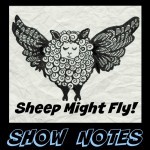Tansy Rayner Roberts's Blog, page 25
August 13, 2016
Glass Slipper Scandal
August 12, 2016
Glass Slipper Scandal – now an ebook!
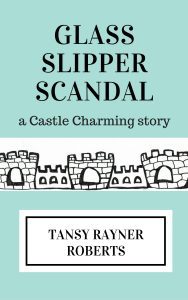 Glass Slipper Scandal, the first of my novelettes about Castle Charming and its community of angry broken princes, runaway princesses, peppy scandal-hungry newspaper reporters and loyal, world-weary guards, is now available as an ebook across various platforms!
Glass Slipper Scandal, the first of my novelettes about Castle Charming and its community of angry broken princes, runaway princesses, peppy scandal-hungry newspaper reporters and loyal, world-weary guards, is now available as an ebook across various platforms!
Charming is a kingdom where fairy tales come true, which has been bad news for its troubled royal family, but good news for the gutter press that thrives on the scandals and gossip provided by their teenage Princes Gone Wild. Kai is a rookie reporter at the Charming Herald. Dennis is a new Royal Hound, charged with protecting the self-destructive princes from disaster.
Disaster arrives in a pumpkin coach… The story of the century will be wearing glass slippers… and Castle Charming will never be the same again.
You can find it at the following ebook retailers (and please send me the link if you find it somewhere I haven’t listed!):
Kindle store (US)
Kindle store (AUS)
iBooks
Kobo
You can also listen to the story for free on the Sheep Might Fly podcast, where it first appeared. All supporters of my Patreon campaign also have access to download the story as a bonus reward.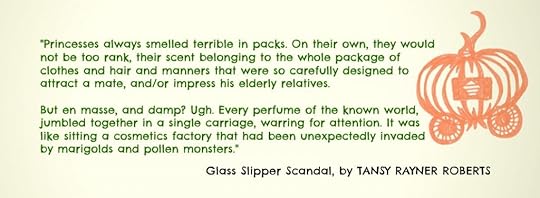
August 8, 2016
Snapshot 2016: John Richards
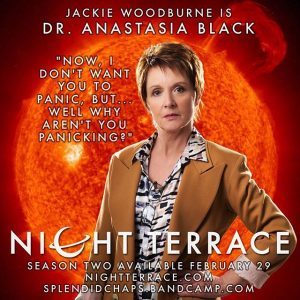 John Richards was co-creator/writer of the acclaimed 2012 ABC1 comedy series Outland (“Sensational writing, a great ensemble, and universal themes of love, loss, and friendship… a hit…” – The Weekend Australian) which became an international cult hit, playing in Germany, New Zealand, Sweden, Canada and the USA.
John Richards was co-creator/writer of the acclaimed 2012 ABC1 comedy series Outland (“Sensational writing, a great ensemble, and universal themes of love, loss, and friendship… a hit…” – The Weekend Australian) which became an international cult hit, playing in Germany, New Zealand, Sweden, Canada and the USA.
In 2013 he had two plays running simultaneously in separate countries – Songs For Europe, a drama about the Eurovision Song Contest, played to rave reviews and packed houses at the Melbourne Fringe Festival, while the short work Found was featured as part of the London Design Festival.
In 2014 he became head writer on Night Terrace, a digital comedy series funded directly through a subscription model, which stars Jackie Woodburne (Neighbours) and a stellar guest cast including Alan Brough, Cal Wilson, Francis Greenslade, Chris Taylor, Collette Mann and John Clarke.
He has been featured on ABC TV’s Big Ideas (hosted by Waleed Aly), created sketch comedy for ABC television and BBC radio and written for publications including Encore, Mumbrella, Cult and DNA and text books Media Reloaded (Cambridge University Press), Queers Dig Time Lords (Mad Norwegian) and Whose Doctor? (Ford Publishing).
He was also part of the Boxcutters and Splendid Chaps podcasts, has presented lectures for the Australian Centre for the Moving Image and was once nominated for a fraction of a Hugo Award.
Night Terrace! I love this SF comedy audio series, and the second season was released this year after another successful crowdfunding campaign. What did you do differently with this new season, to build on what you learned from Night Terrace: year one?
We approached it a bit more as a season, I think, than as eight separate stories. So there was a stronger thread through the adventures, although that might be something only we would notice! The biggest thing was just knowing those characters and how they sounded, which made it easier to write for them. We also asked Jackie what she would like from a second season and she said “I’d love to be a villain” so we wrote that for her! And she was AMAZING. The calibre of the season 1 cast made it easy to get such amazing guests for season 2. When we were recording the credits I started laughing at how random they seemed when put together. “Starring someone from Neighbours, someone from Prisoner, someone from Doctor Who… and John Clarke”. Collette Mann played a character who didn’t even have a name!
What’s next for you, creatively? Will there be more Night Terrace? Something new? (And if there’s nothing you can announce yet, what would be your dream science fictional project to make here in Australia?)
There will be a season 3 of Night Terrace! Which we hope will complete one whole series of adventures while setting us up for a new run. Night Terrace: The Next Generation (except not that, obviously). We’ve also started tentatively exploring an idea of an anthology audio SF series, but everyone’s so busy and our projects are extremely labour intensive so it’s all gently bubbling at the moment. We’ve also had approaches for further international distribution so we’re following those in the hope we can build on our current audience before we start looking into season 3. It’s so hard to be storytellers in Australia because – except for the rare few – there just isn’t the money to allow you to do it full time. So you’re always trying to fit it around other gigs.
This is completely not spec fic related, but you recently took on a job managing social media for Gardening Australia! What are some of the challenges with that, and do you have any funny stories about compost yet?
We eat a lot of cake in the Gardening Australia office. A LOT of cake. It is the best show to work on, and as someone who – shameful admission – had never seen the show in the previous 26 seasons I was surprised to discover how entertaining it is. Our head researcher Millie believes that everything originates from plants – food, liquor, industry, clothing, entertainment – so Gardening Australia can cover EVERYTHING. We do a lot of sustainability pieces and profiles of people as well as how to re-pot your fuchsia, which I didn’t expect. So my job has the freedom to post terrible puns, pictures of The Goodies, videos of art pieces that play trees… there’s a park in Ohio that has recreated a Georges Seurat painting in topiary. How great is that? The world is full of brilliant insanity which I get to share with hundreds of thousands of people. I may have posted some Daleks at one point. Look for gardeningaustralia on facebook and instagram, people! We also had Mad As Hell’s art department on our floor so there were a lot of Bladerunner props floating around, and Catalyst have an office here so I got to chat about the multiverse with Graham Phillips. It really is a top job. Did I mention the cake?
What Australian work have you loved recently?
While the execution perhaps wasn’t as good as the premise, I really appreciated Cleverman. To see an Australian genre production that ambitious and that original was an absolute delight. I’m really looking forward to the second season which I hope will build on the strengths of the first series while perhaps streamlining some of the story telling. But just the fact it exists at all amazes me.
Which author (living or dead) would you most like to sit next to on a long plane trip and why?
I tried to see Quentin Crisp in New York but he was in the UK on tour at the time, and Kurt Vonnegut would obviously be up there. So a posthumous chat with either would be fun. I feel they’re too obvious, though. While I am talking to dead people, though, I was always a huge fan of Victoria Wood who perhaps wasn’t given her due as a writer of TV drama. Charlie Brooker, Rob Shearman and Narrelle M Harris could be good choices on the “not dead” side. But who wants to talk to living people? Urgh.
Check out a host of Australian SF creators being interviewed at the Snapshot website!
Sheep Might Fly: Unmagical Boy Story Part 5
“Unmagical Boy Story” is a 13-part sequel to “Fake Geek Girl,” and is original to this podcast.
One magical university, divided between the Colleges of the Real and Unreal. One pub. One indie band. A lot of drunk witches on a Friday night. One shattered friendship, due to be repaired. One Practical Mythology paper which really has to be finished by Monday… Oh, and trolls. Let’s see who survives Friday night drinks!
Part 5 – 11PM Second Set Contains New Material (Don’t Feed the Trolls)
Viola and Sage compete as to which of them is least ruffled by their battle in the alley…
Catch up on previous episodes here!
Part 1 – 7PM, Little Black Dress Alert
Part 2 – 8PM, Friday Night Cover Charge: Two Drinks
Part 3 – 9PM I Hate That Song So Much Right Now
Part 4 – 10PM The Band Takes a Break
Sheep Might Fly has its own Twitter account: @sheepmightfly
and its own Tumblr account: Sheep Might Fly
Follow along for updates, previews and other Sheep Might Fly specific chatter!
Master list of Sheep Might Fly serials.
Support Tansy & Sheep Might Fly at Patreon.
August 7, 2016
Snapshot 2016: Kathleen Jennings
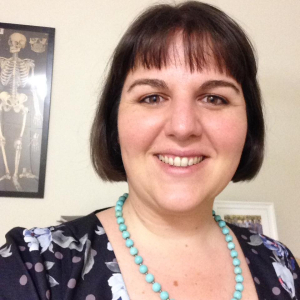 Kathleen Jennings is an illustrator and writer in Brisbane. She was raised on books on a cattle property in western Queensland, and practiced as a translator, lawyer, illustrator and writer before working out that was probably a few careers too many. Her art is on the cover of (and sometimes inside) books from publishers including Tor.com, Small Beer Press, Subterranean, Tartarus, Fablecroft and Ticonderoga, while her stories and comics have been included in publications such as Lady Churchill’s Rosebud Wristlet and the Candlewick collections Steampunk! and Monstrous Affections. She has received several Ditmar awards for her art, fanart and writing, and is a three-time finalist for the World Fantasy Award for art. She can be found online at tanaudel.wordpress.com and as @tanaudel at all the usual locations.
Kathleen Jennings is an illustrator and writer in Brisbane. She was raised on books on a cattle property in western Queensland, and practiced as a translator, lawyer, illustrator and writer before working out that was probably a few careers too many. Her art is on the cover of (and sometimes inside) books from publishers including Tor.com, Small Beer Press, Subterranean, Tartarus, Fablecroft and Ticonderoga, while her stories and comics have been included in publications such as Lady Churchill’s Rosebud Wristlet and the Candlewick collections Steampunk! and Monstrous Affections. She has received several Ditmar awards for her art, fanart and writing, and is a three-time finalist for the World Fantasy Award for art. She can be found online at tanaudel.wordpress.com and as @tanaudel at all the usual locations.
This has been your Year Of No Day Job, allowing you to mostly focus on your art and writing. What have you been up to, and has it been everything you hoped?
I’ve been back at uni, beginning an MPhil in Creative Writing! It’s an illustrated project and I’m getting to explore the beautiful side of Australian Gothic literature. It’s also giving me a needed structure to the year! So far I’ve been concentrating on getting my feet under me after a long break from academia, but I have quite a few projects in the works and coming out – and of course I have to wait for the publishers to announce them.
The art is more visible, of course, but I am writing. There’s the novella, and a few weightier manuscripts in progress, as well as a growing pile of ‘orrible first drafts of picture books. When the pile begins to topple I will reach in at random and pick one to develop.
And then this six week trip to the USA, England, Iceland and Norway, which wasn’t a holiday, and which has given me so many new themes and textures and stories.
 Tell me about Iceland! I know I should construct a proper question for this but really I just want to know all about your Iceland retreat! It’s exciting! Iceland!
Tell me about Iceland! I know I should construct a proper question for this but really I just want to know all about your Iceland retreat! It’s exciting! Iceland!
Yes! It was a one week art retreat organised by Light Grey Art Lab, with 7 other artists plus the three from Light Grey. We’d go out for 8-10 hours everyday, climbing over rocks and behind waterfalls and down lava tubes, then come back and give each other workshops in the evening. It was a great group (you should check them all out: https://tanaudel.wordpress.com/2016/01/23/iceland/) and they worked us very hard.
The land itself felt so young. You could see the geology happening. It was like it had been recently terraformed. You can see why Verne started Journey to the Centre of the Earth there – the same reason our team got the theme to Jurassic Park stuck in our heads.
It was a fascinating mental exercise working out what to do with that newness, that relatively temporary and recent history of any people at all. Especially because my picture-and-story brain depends on movement and character, and I’d just come from Dartmoor where you can see what a volcanic landscape can get eroded down into, and what a Paleolithic society will do to it. They are opposite ends of a process, really – you could go from Thingvellir to Exeter and feel like Polly and Digory. It took me a while to like it, in fact, because I couldn’t quite parse it (don’t worry – eventually I liked it very much!).
And I will write more about this once I get home (I’m still in Oslo as I write this).
 You’ve developed an impressive portfolio over the last few years, providing cover art for a variety of books and projects with other creators. What are some of your dream projects or collaborators that you’d love to work with?
You’ve developed an impressive portfolio over the last few years, providing cover art for a variety of books and projects with other creators. What are some of your dream projects or collaborators that you’d love to work with?
Well, there are – again – a few dim possibilities I can’t say much about. But I had so much fun working through Angela Slatter’s Bitterwood Bible manuscript and just drawing what I thought – very straightforward – and I’d love to be able to do that direct response to a book again. And maybe even the other way: illustrate a whole book and then give it to someone else to write.
Catherynne Valente and C. S. E. Cooney are some current writers whose stories resonate with me particularly, and with whom I’d like to do more.
I’d like to illustrate some classic works in the loosest and chattiest of my styles. Lately I’ve had the chance to illustrate a sequel to and a translation of two very loved childrens’ books (the first for Small Beer Press, more to come, and the second was Gobbolino, the Witches Cat for Utz Books), and I’m hooked. I want to illustrate Picnic at Hanging Rockand Cold Comfort Farm and I have at least three alternate readings for Pride and Prejudice, all of which I want to draw, so that may have to be something for my spare time (hah!). And maybe some Georgette Heyer, but she calls for such a degree of precision, whereas Austen is just, “a tree”, “a dress”. Who else, since I’m putting this out there: Joan Aiken, Dianna Wynne Jones, Patricia Wrightson.
Because my focus is often on story first, lately I keep thinking I’d like to illustrate Charles Vess or Alan Lee or Rovina Cai, and then remembering they are illustrators. There’s such a depth to how they think about story, when you look at their body of work or talk to them, that it feels like a door to a novel.
What Australian work have you loved recently?
I read Trent Jamieson’s Day Boy just after reading Burial Rites and My Antonia and rereading Tom Sawyer, which was an oddly suitable placement for it, because he managed to pull off a late-colonial coming-of-age-story but backwards, with vampires.
Rovina Cai’s illustrations are just enchanting. I love how she sees the world, or how it filters through onto her paper.
And Angela Slatter’s Vigil is now out, and she’s always working on new things which I sometimes get to see and draw in advance, so – watch this space!
Which author (living or dead) would you most like to sit next to on a long plane trip and why?
Jane Austen, because I keep finding out just how scathing and witty and kind she could be – also I’m pretty sure she would have a ball obliquely critiquing passengers on public transport.
Mike Mignola, because he sees even the shadowed world in very particular, simple, muscular, clear-cut ways in both his art and writing – but I’d want Guillermo del Toro to sit on the other side because he creates worlds that are so lush and foaming with weighty frivolity, and I’m fascinated by how well the two can work together and want to see that in action.
C. S. E. Cooney because she loves story so passionately, both when writing and talking, and Robin McKinley because they belong to the same part of my literary geography.
Check out a host of Australian SF creators being interviewed at the Snapshot website!
August 4, 2016
Snapshot 2016: Charlotte Nash
Portrait of Author Charlotte Nash
Charlotte Nash is an Australian writer with degrees in engineering and medicine. Her short stories have been nominated for the Aurealis and Ditmar awards, and have been published in Every Day Fiction, Andromeda Spaceways Inflight Magazine, Dimension6, Dreaming of Djinn, Use Only as Directed, and Phantazein. In addition, she is a best-selling author of rural medical romance novels, most recently The Horseman. She confesses a special love for motorbikes, heavy machinery and mock cream donuts, and isn’t sure which is more dangerous. charlottenash.netThe Horseman is the latest of your contemporary rural romance novels, and you just had a big release month! Tell us about your book, and why it’s striking such a chord with readers around Australia.
Peta Woodward, a Melbourne emergency doctor is injured on a cathartic solo trek through the High Country, and is most reluctantly rescued by a local horseman, Craig Munroe. While Peta heals, she becomes involved in his small hometown, which is in the grip of a crime spree, and the dramas surrounding the return of Craig’s nemesis who wants to be the next parliamentary member for the area. The story follows Peta and Craig’s romance, unlikely friendships, the catching of the theives and a new era for the town.
Without speaking directly for readers, the feedback I have had is that readers connect with the High Country setting, the themes of natural horsemanship and the life-and-death drama through the story. For me, the story comes from a place deeply connected to my horse-filled childhood, where the horses meant more to me than people. Perhaps that shows somehow! I also think that the High Country itself resonates with many readers because narratives like The Man From Snowy River and The Silver Brumby are so in the public conscience.
Meanwhile, your SF interests are currently directed into a creative writing PhD. Given your interest in a variety of genres, what was it about SF that made you choose it for this project, and what’s exciting you right now about your PhD-in-progress?
SF is my native genre. I had a particular project in mind for the PhD (a time-travel story with alternate history, Edison vs Tesla, and a die-hard style building lock-down). I also wanted to study craft techniques in some of my favourite sci-fi thrillers for the exegetical component, so the choice was easy. SF gives you the ultimate flexibility to play with the real world, to blend it and reshape it, and make metaphors and references and be unapologetic. Right now I’m most excited by being able to write action taking place in an altered Victorian setting, and pulling apart works by Michael Crichton, Neal Stephenson and Andy Weir as to how they handle their technical world-building. It’s really challenging, but I’m determined to come out the other side a better writer and with a good story.
During the last Snapshot you mentioned that you were working on an agricultural cyberpunk novel, about the future of food! Did you finish writing the manuscript, and what’s happening with it now?
I did! Its working title is Coderunner and it’s currently a draft needing an edit. I loved writing it, but unfortunately progress is taking a back seat to other projects at the moment. I will be coming back to it though.
What Australian work have you loved recently?
With a young child and a lot of PhD reading to get through, I’ve been doing most of my reading on Audiobook and SF short story podcasts. The Wife’s Tale by Christine Wells is the most recent Australian work I’ve “read” this way. Funny, tragic and engrossing. Angela Slatter’s Vigil is next on my physical TBR pile – I’ve only made it in a few chapters but it’s as great as you’d expect from Angela.
Which author (living or dead) would you most like to sit next to on a long plane trip and why?
Michael Crichton. I think that could have been interesting conversation – we have similarities in educational history and when I read his memoir Travels I discovered he left clinical medicine for the same reasons I did. I always wanted to know more about that. Though let’s be honest, if it really happened, it would be super awkward:)
Check out a host of Australian SF creators being interviewed at the Snapshot website!
August 3, 2016
Snapshot 2016: Ben Peek
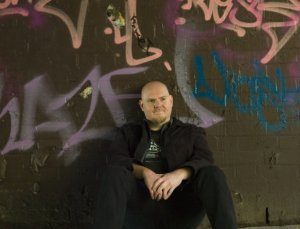 Ben Peek is the Sydney based author of Leviathan’s Blood, The Godless, Black Sheep, Above/Below, Twenty-Six Lies/One Truth, and the collection, Dead Americans and Other Stories. You can find him on twitter at twitter.com/nosubstance and at www.theurbansprawlproject.com
Ben Peek is the Sydney based author of Leviathan’s Blood, The Godless, Black Sheep, Above/Below, Twenty-Six Lies/One Truth, and the collection, Dead Americans and Other Stories. You can find him on twitter at twitter.com/nosubstance and at www.theurbansprawlproject.com
Since the last Snapshot, you have had two novels of a fantasy trilogy released from Tor – The Godless and Leviathan’s Blood. How has the experience been of working with a major UK publisher as an Australian author, as compared to with your previous novels?
All my books but Above/Below have been done in a different time zone – the UK, US, and Canada – so I’ve kept that strange sense of everything happening while I am asleep, and the first hours of the morning being for responding to email. But after that, everything has been a bit different.
Primarily, it’s the size of it. Pan Macmillan have all these people who do promotion, edits, line edits, covers, marketing, and so on and so forth, and there’s a very real sense of a book being taken away from you to be worked on by those people. I don’t mean that in a bad way, I should add. Saying that a book is being ‘taken’ away sounds bad, but honestly, line editing, marketing, and all of that can be taken by whoever wants that particular pain. But my other books were independent presses, and you’re often working with the same person through all of those parts, and there’s a sense of it always being with you, from beginning to end. In some ways, you feel as if you have a little more control, but it’s mostly an illusion created by being targeted at a smaller audience, I think. Yet, at the same time, there is a very real sense of a book being out of your control with a larger publisher, that you have little say over who sees it, hears about it, reviews it, and so forth. In some ways, it’s good, in some bad.
Being Australian hasn’t really meant anything, I am afraid. It’s biggest detraction, as always, is simply distance.
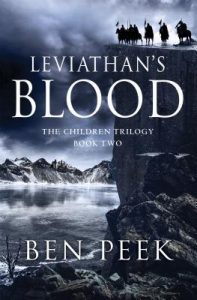 Leviathan’s Blood was very recently released! Why should everyone immediately run out and buy a copy?
Leviathan’s Blood was very recently released! Why should everyone immediately run out and buy a copy?
Because it’s mine?
Well, on the off case that that doesn’t work for you, you ought to rush out and buy it because it’s big and crazy. It is a epic fantasy series linked together by a thematic concern of power, in particular divine power, and how you define what a god is, how a god defines your world, and so on and so forth. It’s full of dead gods, live gods, people who were once gods, the dead, the living, big set piece sword fights, huge artificial countries built out of stone across a black ocean, and terrible people. It is also a work that is built to show a multicultural, diverse world, one that I think is very Australian, if I may say so, and if you want to see big epic fantasy with diversity and all this other out there crazy stuff, you ought to give it ago.
Also, I saw someone say it was the best book published this year. Now, obviously, I don’t know what else they have read, but lets assume everything, and allow them to be right.
What are your plans for the next thing, after the trilogy is released? Are you working on a Shiny New Thing right now, or are you still elbows-deep in Book 3?
No, I’ve finished the third book, and I am writing a new book, which is strange, and about things that don’t exist.
I don’t actually want to say too much about it, at the moment. Hopefully everyone will love it once I am done, and people will get to read it, but I’ve found talking about new things while you write them kind of talks it out of you, a little. You want to keep it inside you until it is done, I think.
What Australian work have you loved recently?
You know, I haven’t read any Australian work recently. I have ordered Kaaron Warren’s new book, I have Rjurik Davidson’s new one, and few others, but I haven’t read much local. It happens. Maybe in the next half of the year it will pick up. I believe Coetzee has a new book out in a few months. He’s a transplanted South African, but his last book was put out by Text, so it’ll count, right?
Right.
Which author (living or dead) would you most like to sit next to on a long plane trip and why?
Right now, it’d be Roberto Bolano.
I finished his magnificent book 2666 a few weeks ago, and I would, entirely, spent a plane ride with him, talking about the themes of it, in particular the notion of violence, and how we create it around us. From violence against women, to the violence of men against each other, to that of war, of literature, of culture. Such a great book, really. I can’t stop thinking about it and I’ve been reading his other work, since (hence why there is no time for Australian authors at the moment, only Chilean ones). Sadly he died in 2003 at the age of fifty, so it would be a conversation with the remains of Bolano, but still, I think it would be fascinating.
Actually, I just had a thought: one of the primary translators of Bolano is Chris Andrews, who is Australian, I believe. So, that counts as an Australian I’ve been reading. Of course, 2666 was translated by Natasha Wimmer, who is an American, but Andrews has done eight or so of Bolano’s books, and surely it still counts, yes?
Check out a host of Australian SF creators being interviewed at the Snapshot website!
August 2, 2016
Snapshot 2016: Rivqa Rafael
 Rivqa Rafael is a writer and editor based in Sydney. She started writing speculative fiction well before earning degrees in science and writing, although they have probably helped. Her previous gig as subeditor and reviews editor for Cosmos magazine likewise fueled her imagination. Her short stories have appeared in Hear Me Roar (Ticonderoga Publications), The Never Never Land (CSFG Publishing), and Defying Doomsday (Twelfth Planet Press). When she’s not working, she’s most likely child-wrangling, playing video games, or practising her Brazilian Jiujitsu moves. She can be found at rivqa.net and on Twitter as @enoughsnark.
Rivqa Rafael is a writer and editor based in Sydney. She started writing speculative fiction well before earning degrees in science and writing, although they have probably helped. Her previous gig as subeditor and reviews editor for Cosmos magazine likewise fueled her imagination. Her short stories have appeared in Hear Me Roar (Ticonderoga Publications), The Never Never Land (CSFG Publishing), and Defying Doomsday (Twelfth Planet Press). When she’s not working, she’s most likely child-wrangling, playing video games, or practising her Brazilian Jiujitsu moves. She can be found at rivqa.net and on Twitter as @enoughsnark.
This has been a great year for you professionally, with your first pro short story sale. Tell me about your story for Defying Doomsday – “Two Somebodies Go Hunting”.
I was honoured and humbled to be included in Defying Doomsday, which is themed around one of the most important trope inversions I can think of. The “Two Somebodies” are Lex, whose chronic pain is due to a childhood injury, and Jeff, who’s autistic; they head out into the desert in a post-pandemic world to find meat for their family.
Thematically, I wanted to examine the differing needs of people with chronic illness and pain in the broader context of disability activism. Although this was something I’d had in the back of my mind, it was well articulated on Tumblr with a commentary on X-Men, which unpacked Rogue and Storm’s conflicting perspectives on curing superpowers, and the idea for the story grew from there.
From a craft perspective, I wanted to write a relatively small story – in the sense that there are really only the two characters on stage and the plot is a classic archetype. Nothing flashy, no cheap tricks, just two siblings who need to work together, and work to understand each other. It was very gratifying to have editors Holly and Tsana, as they really got what I was trying to do… so hopefully it succeeded!
You went to WisCon this year – I’m so jealous. What were some of the highlights of this experience for you? And why was this the US con you wanted to attend?
WisCon was a wonderful, enlightening, overwhelming experience. I met so many amazing people, some of whom I’ve long admired from afar via Twitter. The sessions I attended were interesting, varied and well run – and there was just so much to choose from. Livetweeting is how I take notes at cons, so I have a pretty comprehensive report up on Storify. But if that’s TL;DR, one personal highlight was the opening ceremony (really! Katherine Cross’s speech about trade unionism and treating hotel staff with respect yielded the first standing ovation of the evening, and the committee’s anecdotes about what the con means to them were very moving). The other was Sofia Samatar’s Guest of Honour speech: all three guests spoke brilliantly, but her words – about taking personal risks in writing beyond usual expectations – really grabbed me. And possibly made me cry.
As for why WisCon, I was mentally signed up from the moment I heard about the concept. Feminist sci-fi – what more could I want? I’d been thinking about overseas cons for a little while (WorldCon in Helsinki is still on my radar), and with membership capped at 1000, WisCon seemed like a great in-between step in a relatively safe environment. It delivered on all of my expectations in that regard (although the thought of a con with tens of thousands of people is still mildly terrifying).
You also won the Best New Talent Ditmar in 2016 – no pressure there, I’m sure! What can we expect from Rivqa Rafael over the next couple of years?
Will you believe me if I say it really doesn’t feel like pressure? I feel encouraged, not pressured, to write more and to write the best work I can. My next publication is a reprint of my first published short story, in Twelfth Planet Press’s Year’s Best YA Speculative Fiction 2015. And I have been writing, although I somehow got myself into a position where I have several stories (including a novel) in the works but nothing finished. I’m hoping to shift the balance soon, so I have something to show the world. I’d love for one of those things to be the novel, which is a YA sci-fi thriller, but it’s hard to say at this point (it needs a lot of work). More short stories, for sure, and other projects that aren’t ready for sharing yet.
I am also deeply appreciative of the Australian spec fic community – so many people have encouraged me from my first tentative steps into it, and with that in mind I do try to give back to it, in the form of judging the Aurealis Awards, participating in this Snapshot as an interviewer, running writing events, and beta reading for various other writers. I really do believe that we are stronger together (yes, that’s a Supergirl quote) and hope that I can foster that in some small way.
What Australian work have you loved recently?
One of the hardest parts of being an Aurealis judge is not being able to squee about all my latest favourite Australian science fiction shorts. There are plenty out there! So I’ll cheat and mention a couple of favourites from last year – Marlee Jane Ward’s novella, Welcome to Orphancorp, is a fantastic dystopic YA romp; Stephanie Lai’s “The Dan Dan Mian of the Apocalypse” (Review of Australian Fiction) is a gorgeously written inversion of superhero tropes; and Claire McKenna’s “The Marriage of the Corn King” (Cosmos) is weird, imaginative and wonderful. As for novels, Louise Katz’s The Orchid Nursery (Lacuna Publishing) has that terrifying Atwoodian quality of ‘that couldn’t really happen…. Could it?’.
Which author (living or dead) would you most like to sit next to on a long plane trip and why?
I think a living one would be best, less corpse stench… I’ll show myself out.
Jokes aside, I’d love a solid thirteen hours with Tanith Lee. There are so many questions I’d like to ask about her dark, irreverent fiction. Her work has captivated me for as long as I can remember, and if her stories terrify me a little – well, I can’t sleep on planes anyway.
Check out a host of Australian SF creators being interviewed at the Snapshot website!
Snapshot 2016: Grant Watson
Grant Watson is an Australian award winning playwright and critic. In 2010, he received the Perth Theatre Trust Guild Equity Award for Best New Play for his political drama Cry Havoc. He is a two-time recipient of the William Atheling Jr Award for science fiction criticism and review, including one for his ongoing column “The Bad Film Diaries” in Australian science fiction journal Borderlands. He blogs about media and science fiction films at The Angriest & FictionMachine.
1. You have a book coming out soon from Twelfth Planet Press! What do we have to look forward to with Something New Can Come Into This World?, and what does the title actually mean?
Something New Can Come Into This World collects the first year’s worth of essays from Fictionmachine, which is a website where I post essays about movies. Since the age of about seven I have been fascinated by how movies are made, and some years ago I realised that knowing *how* one was produced often answered the question of *why* certain elements of them were good and bad. The essays combine “making-of” information with criticism in a hopefully entertaining fashion. The essays are all still online for free as well – the book is for people who don’t feel comfortable reading 80,000 words of criticism and filmmaking stories off a computer monitor or smartphone.
The title comes from one of the essays – each essay uses a line of dialogue from the film as its title. The longest essay in the book is based around Andrew Stanton’s John Carter, and it was one with which I was particularly happy. It’s a new book, so “Something New…” seemed to have an appropriate ring to it.
2. I was so excited to hear about your recent production of a futuristic all-female Coriolanus on the Melbourne stage. What was the process like, of adapting the play, and what did you take away from the experience?
Adapting Coriolanus pretty much came about like this: I was asked if I was interested in directing an all-female Shakespeare production, and I said yes, and then in conversation with the producers we settled on adapting Coriolanus. The choice was kind of deliberately provocative: the play is aggressively masculine, and so presented the largest challenge we could think of in terms of turning all of the characters into women. We were very firm on the idea that the cast should play female characters, rather than continue to play male versions.
The only significant changes to Shakespeare’s script were swapping over the pronouns from “he” to “she” and so on. Turning the word “man” into “woman” turned out to be a small challenge, since with much of Shakespeare’s dialogue you have an iambic rhythm going on and the additional syllable throws the meter out. I had the first crack at adapting the dialogue and then we continued to workshop the lines as a group during rehearsals. Beyond that we pretty much left it verbatim – the only male referenced in our script was somebody’s horse.
The setting pretty much came about because I wanted to avoid giving the play a specific historical setting. I didn’t want to set it in ancient Rome, but at the same time I sort of loathe gimmicky Shakespeare productions that pick a different period purely for aesthetic reasons (Much Ado in the 1920s, and so on). The brief that I gave our exceptional designer Laura Pearse was that of a world than had ended, and then everyone had simply stitched it all back together again with what was left. As a result there were clothes that seemed medieval in some ways, Elizabethan in others, and aggressively contemporary in places as well. It was all salvaged and scrambled. While publicising the play I found myself describing the setting as “post-post-apocalyptic”: there *was* an apocalypse, but it probably happened a generation ago.
I think the main thing I took away from the experience is that Australia has an enviable number of immensely talented female actors, and an industry that really does not use that talent enough!
3. Given your ongoing interest with performance, both as a critic and as a creator, what would be your dream science fictional project to work on, here in Australia?
My dream science fiction project would actually be to write and direct a feature film adaptation of John Wyndham’s Chocky. I adored the novel as a child as well as the 1980s British TV adaptation, but I think it actually has enormous potential as a quite threatening sort of thriller. Imagine having a child that always talks to an imaginary friend, and then discovering one day that the imaginary friend is talking back.
Many years ago I was actually working with a very talented film producer and we enquired about the rights, but sadly they had been bought up for, of all people, Steven Spielberg. A dream shattered!
4. What Australian work have you loved recently?
Defying Doomsday is a recent short story anthology based around apocalypses, but with a focus on disabled protagonists. I thought it was a striking idea and shone a light on a section of society that regularly gets overlooked or dismissed. The range in style, setting and disability across the stories was fabulous. Editors Tsana Dolichva and Holly Kench did a phenomenal job – as did their authors.
5. Which author (living or dead) would you most like to sit next to on a long plane trip and why?
Probably not Shakespeare – I’d have to calm him down and explain what aeroplanes were. In the end I suspect my choice would be either Douglas Adams or Iain Banks – I was a fan of both of their writing, and on separate occasions attempted to get them over to Australia for conventions I was co-running. Both men died before I had a chance to thank them for their work.
You can follow all the action at the Snapshot site, via Twitter @AustSFSnapshot or on Facebook, and follow our interviewing team to keep up with all the happenings!
You can find the past five Snapshots at the following links: 2005,2007, 2010, 2012, 2014.
August 1, 2016
Sheep Might Fly: Unmagical Boy Story Part 4
“Unmagical Boy Story” is a 13-part sequel to “Fake Geek Girl,” and is original to this podcast.
One magical university, divided between the Colleges of the Real and Unreal. One pub. One indie band. A lot of drunk witches on a Friday night. One shattered friendship, due to be repaired. One Practical Mythology paper which really has to be finished by Monday… Oh, and trolls. Let’s see who survives Friday night drinks!
Part 4 – 10PM The Band Takes a Break
Viola auditions Sage for the position of nemesis, and there are trolls in the air. The trolls are not metaphorical.
Catch up on previous episodes here!
Part 1 – 7PM, Little Black Dress Alert
Part 2 – 8PM, Friday Night Cover Charge: Two Drinks
Part 3 – 9PM I Hate That Song So Much Right Now
Sheep Might Fly has its own Twitter account: @sheepmightfly
and its own Tumblr account: Sheep Might Fly
Follow along for updates, previews and other Sheep Might Fly specific chatter!
Master list of Sheep Might Fly serials.
Support Tansy & Sheep Might Fly at Patreon.


